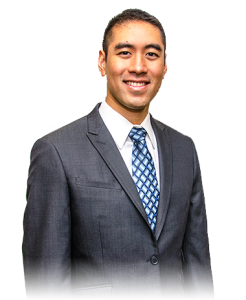Don’t stick your neck out – it may get hurt! Some experts blame ‘text neck.’
WEST ORANGE, N.J. (PRWEB) August 20, 2019
Don’t stick your neck out! At least, not for too long or too far, advises Kaliq Chang, MD, an interventional pain management specialist with Atlantic Spine Center, who says “poor posture is a leading culprit for musculoskeletal pain; it can result in strained neck muscles, tendons and ligaments.”
Some scientists call it “tech neck” or “text neck.”
The amount of force exerted by the head on the cervix of a typical adult looking down to text or read email on a mobile phone or iPad is about 60 pounds – equivalent to a small bag of cement or five average-sized bowling balls, says Dr. Chang, referring to calculations reported in the journal Surgical Technology International.
A San Francisco State University study published in 2018 in Biofeedback backs him up. Researchers indicate a “slouching posture” — head in a forward position and neck scrunched – for lengthy periods in front of a computer screen or other digital device can lead to headaches, muscle tension, fatigue, even eventual injury to the cervical vertebrae, which extend from the skull to the upper torso.
“The neck is a wondrous and complex network of cervical bones, joints, musculature and connective tissue working in balance with the shoulders to support and stabilize the head and provide movement and range of motion, enabling us to turn our head in almost any direction,” explains Dr. Chang. “Pushing the head forward and out of alignment for an extended time or engaging in activities involving repetitive or forceful movement or awkward positions puts undue strain on this system and can lead to neck and shoulder pain.”
Neck pain reportedly affects up to 20 percent of all Americans at some point in their lives, ranking among the top five or six disorders in the nation and impacting quality of life, Dr. Chang notes.
Of course, improper posture is not the only source of neck pain, he emphasizes. Injuries to neck muscles and soft tissue; degeneration of cervical disks due to aging; herniation of cervical discs; occipital bone spurs; infections and disease; obesity; and psychosocial factors like stress and depression can promote onset of neck pain, Dr. Chang says. The pain can take many forms, such as a sharp, stabbing sensation; a dull ache or soreness; burning feeling; stiffness; or pain that radiates to the head or shoulders.
With exception of accidents and falls, most neck pain is unrelated to emergent medical conditions and usually resolves on its own or with minimal treatment, Dr. Chang adds.
“However, patients should consult a physician, particularly a pain-management specialist, as soon as possible if pain:
- Persists for more than a week or two and fails to respond to home remedies, such as ice to reduce swelling, moist heat to aid healing and over-the-counter pain medications.
- Becomes severe for no apparent reason or radiates down arms or legs.
- Makes it difficult to move the head.
- Is accompanied by headaches, numbness, tingling, difficulty swallowing, or nausea.
Ongoing neck pain may be related to infections or diseases like meningitis, disorders of the cervical discs, head-and-neck cancers, heart disorders – even diabetes, as reported in 2019 by scientists from the University of Sydney, Dr. Chang says.
“Non-surgical approaches are always a first option for relieving neck pain when other serious problems are ruled out,” Dr. Chang says. “Physicians might recommend light physical therapy and neck exercises, medication, and epidural steroid injections if the problem is related to the cervical vertebrae.”
Some specialists are even harnessing the power of biologic substances, including injections of a patient’s own adult (mesenchymal) stem cells, to mitigate inflammation, relieve chronic musculoskeletal pain and repair orthopedic injuries.
Fewer than 5 percent of neck-pain patients will require surgery. For those who do, procedures can range from artificial disc replacement for a herniated cervical disc to various decompression procedures that remove tissue pressing against a nerve or limit motion between vertebrae, Dr. Chang says.
Of course, the most important step is prevention. Dr. Chang offers these tips to protect the neck:
- Make lifestyle changes: stop smoking, lose weight, exercise regularly.
- Don’t sit for extended periods; take breaks. Be mindful of your posture.
- Adjust the computer screen to eye level.
- Use just one pillow – not several – while sleeping; lie on your back, if possible.
- Bend knees and keep back straight when lifting. Avoid heavy shoulder bags.
- Stop constantly checking your mobile phone.
Atlantic Spine Center is a nationally recognized leader for endoscopic spine surgery with several locations in NJ and NYC. http://www.atlanticspinecenter.com, http://www.atlanticspinecenter.nyc
Bio: Kaliq Chang, MD, is an interventional pain management specialist, double board-certified in interventional pain management and anesthesiology.

